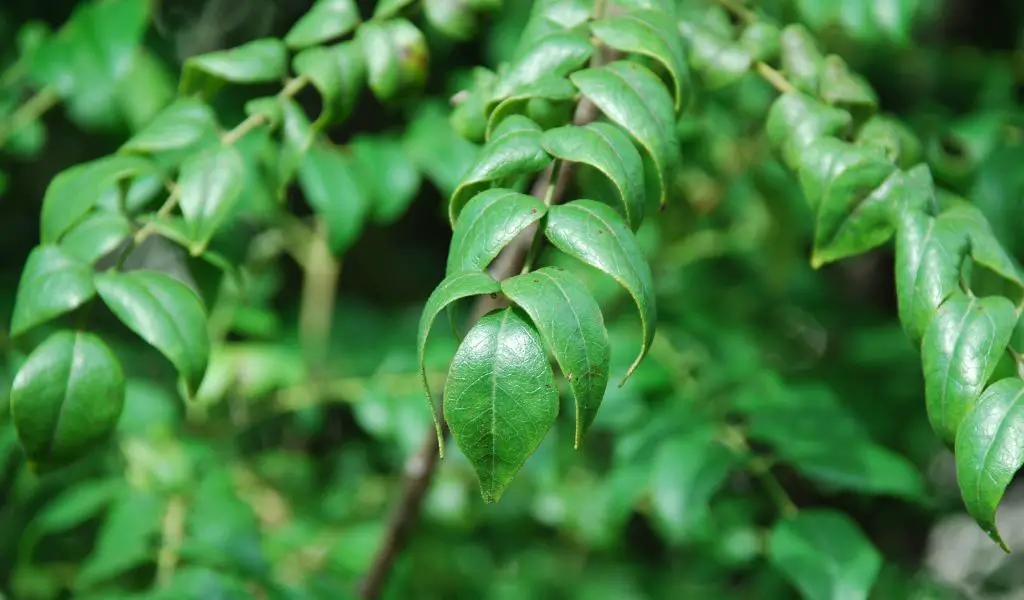Growing your own curry leaves can be a rewarding experience for gardeners who are looking to add some exotic flavors to their culinary dishes.
These aromatic leaves are an essential ingredient in many Indian, Sri Lankan, and Thai recipes, and they are a must-have for anyone who loves cooking with herbs.
To grow curry leaves at home, you will need to choose a warm, humid location with well-draining soil that is rich in organic matter. You can start your curry leaf plant from seeds or cuttings, and you will need to water and fertilize it regularly to promote healthy growth.
What are Curry Leaves?
Curry leaves (Murraya koenigii) are a type of herb that belongs to the Rutaceae family.
They are native to India and other parts of South Asia, and they have been used in cooking for centuries.
Curry leaves have a distinctive aroma and a slightly bitter taste that is often described as citrusy.
Curry leaves are not the same as curry powder, which is a blend of different spices that are commonly used in Indian cuisine.
While curry powder may contain curry leaves, it is not a substitute for fresh curry leaves.

Why Grow Curry Leaves?
There are several reasons why you might want to grow curry leaves.
First and foremost, curry leaves are a delicious and versatile herb that can be used in a wide range of dishes.
Whether you are making a curry, a stir-fry, or a soup, curry leaves can add a depth of flavor that is hard to replicate with other herbs.
In addition to their culinary uses, curry leaves also have some health benefits.
They are a rich source of antioxidants and have been used in traditional medicine to treat a variety of ailments, including diabetes, high blood pressure, and digestive issues.
How to Grow Curry Leaves
Now that we have covered the basics of curry leaves, let’s move on to the practical aspects of growing them.
Here are the steps you need to follow to grow healthy, flavorful curry leaves in your own backyard.
Step 1: Choose the Right Location
Curry leaves prefer warm, humid climates, so if you live in a region with cold winters, you may need to grow them indoors or in a greenhouse.
When choosing a location for your curry leaf plant, look for a spot that gets plenty of sunlight but is protected from strong winds.
Step 2: Choose the Right Soil
Curry leaves prefer well-draining soil that is rich in organic matter.
You can improve the quality of your soil by adding compost or other organic amendments before planting. Aim for a pH between 6.0 and 7.5 for optimal growth.
Step 3: Plant Your Curry Leaf
You can start your curry leaf plant from seeds or cuttings.
If you are starting from seeds, soak them in water for 24 hours before planting to improve germination rates.
If you are starting from cuttings, take a 4- to 6-inch cutting from a healthy curry leaf plant and dip the cut end in rooting hormone before planting.
Step 4: Water and Fertilize Your Curry Leaf
Curry leaves need regular watering, especially during the growing season.
Water your plant deeply once a week, and make sure the soil stays evenly moist.
You can also fertilize your curry leaf plant with a balanced fertilizer once a month to promote healthy growth.
Step 5: Prune Your Curry Leaf
Regular pruning is essential for keeping your curry leaf plant healthy and productive.
Prune back any dead or damaged branches, and pinch back the tips of new growth to encourage bushier growth.
Conclusion and final thoughts..
With the right location, soil, and care, you can grow healthy and flavorful curry leaves right in your backyard.
Whether you are an experienced gardener or a beginner, following these simple steps can help you successfully grow this versatile herb.




